How To Draw Realistic Digital Art
Beginners Guide: Realistic Pencil Drawing
Updated: 13 Feb 2022

Pencil drawing is monochromatic. Information technology has a single hue (grey), simply with dissimilar effulgence values (from very low-cal gray, to very nighttime greyness).

To go realistic results when drawing with pencils, outset by cartoon the course accurately. Then, brightness values are the fundamental. Meaning, how nighttime or light each area is. In improver, pay attention to edges and transitions.
While there are many factors when it comes to drawing realism, hither I focus on the most of import ones.
The 4 key factors for realistic pencil drawing are:
- Precision Drawing
- Effulgence Values
- Edges
- Transitions
Note:
At the stop of this tutorial, you will find some practical drawing tips.
Precision Cartoon
Each object or effigy has singled-out characteristics and a unique form. Therefore, in order to produce a realistic upshot, the craft of cartoon must exist precise.
To draw in an accurate way, you need to understand what you lot are looking at, and to draw what you see, and Non what you know.
Foreshortening:
When drawing in perspective (a set of guidelines for drawing in a realistic way), objects are subject to foreshortening.
In the post-obit example, you lot know that the meridian office of a candle is round (circle), simply when y'all draw what you see (when drawing a side view), the peak role of the candle is actually elliptical:
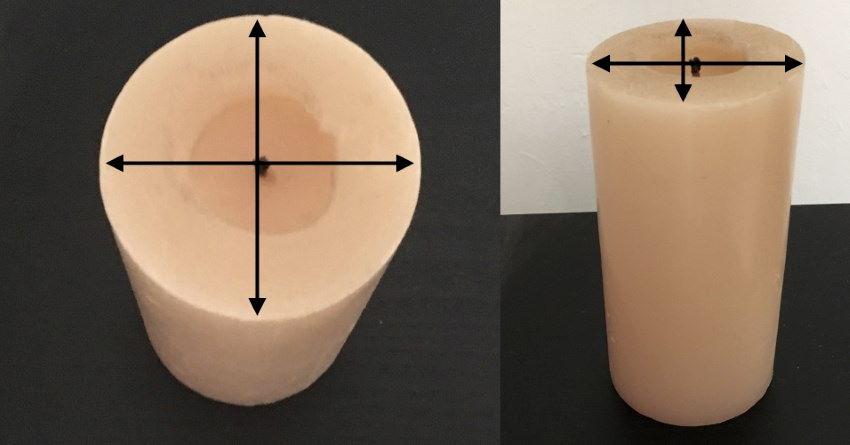
Opposite phenomenon occurs when looking from to a higher place. The candle's long cylindrical body becomes shorter due to foreshortening:
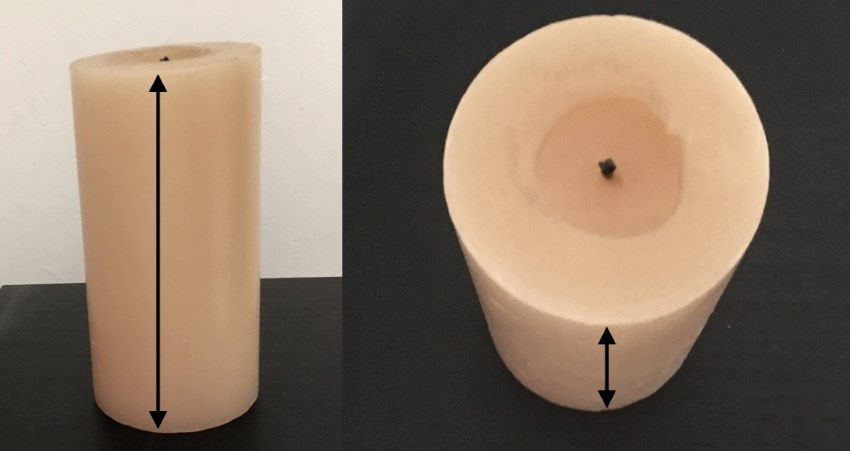
Explanation:
In perspective, objects that are in front of the observer look smaller as they are farther away.
Because they are in front of the observer, they go on the ratio between width and height, meaning there is no baloney, the object looks the same simply smaller.
On the other hand, objects or surfaces along the line of sight are distorted (pregnant, foreshortened).
The reason is the observer bending of sight. The more a surface is in the direction of your sight, the shorter it is.
In the next example, see how the surfboard is foreshortened when facing you lot.
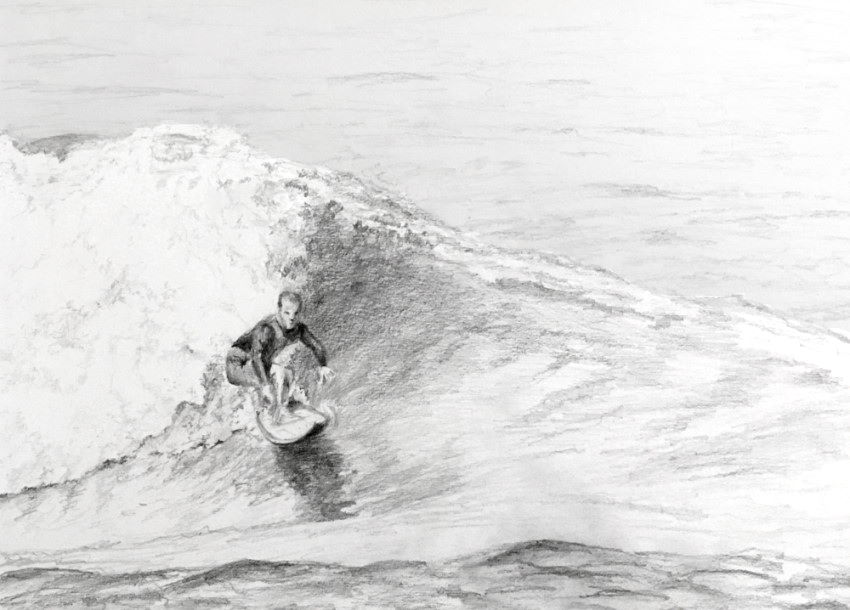
To go a deeper understanding on foreshortening, read my guide on how to describe objects from imagination.
How to draw accurately:
Drawing is washed in a two-dimensional manner, on a apartment paper. Condone the third dimension, which is depth, and look at objects in a 2nd way: width, top and angles.
Apply your pencil to run across the angle of any line you choose to draw.
Remember:
Your drawing paper is flat, and then when measuring angles, turn the pencil left or right only! Never forward or backward.
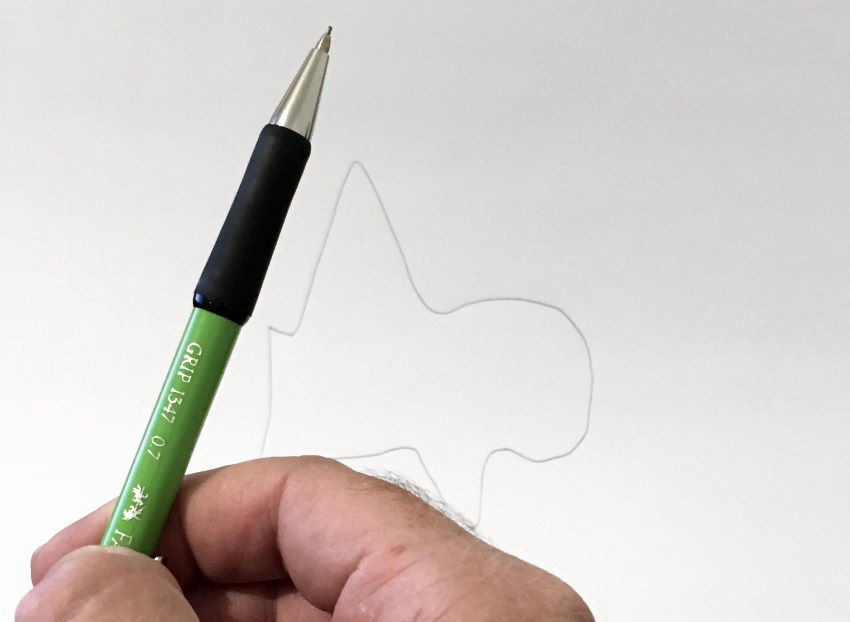
Do the aforementioned for complex drawings, like portraits.
In the next example, I paid attention to the bending of the optics.
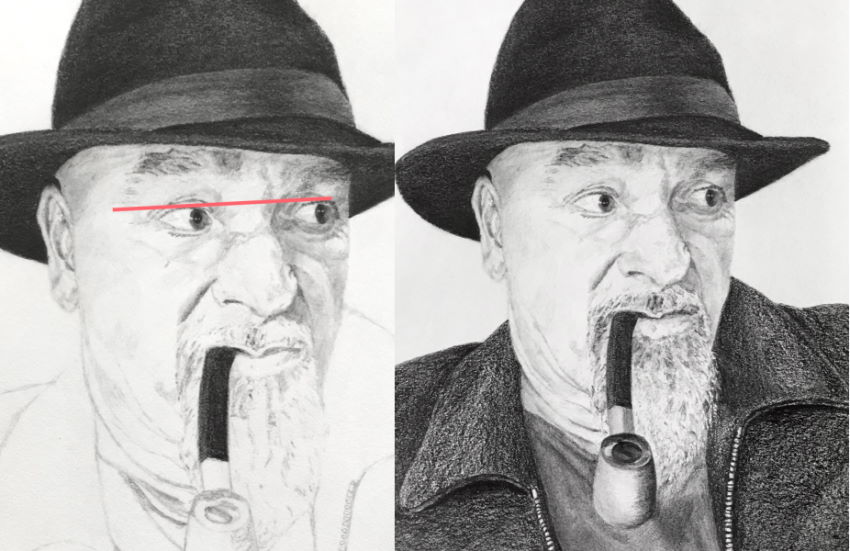
If you struggle drawing accurately, read my guide on how to draw accurately from observation.
Tip:
When two people look at an object from a different bending, they draw it differently.
The same happens with your eyes. Each eye looks at an object from a dissimilar angle.
To draw accurately, close one eye when y'all are using a pencil to measure dimensions and angles.
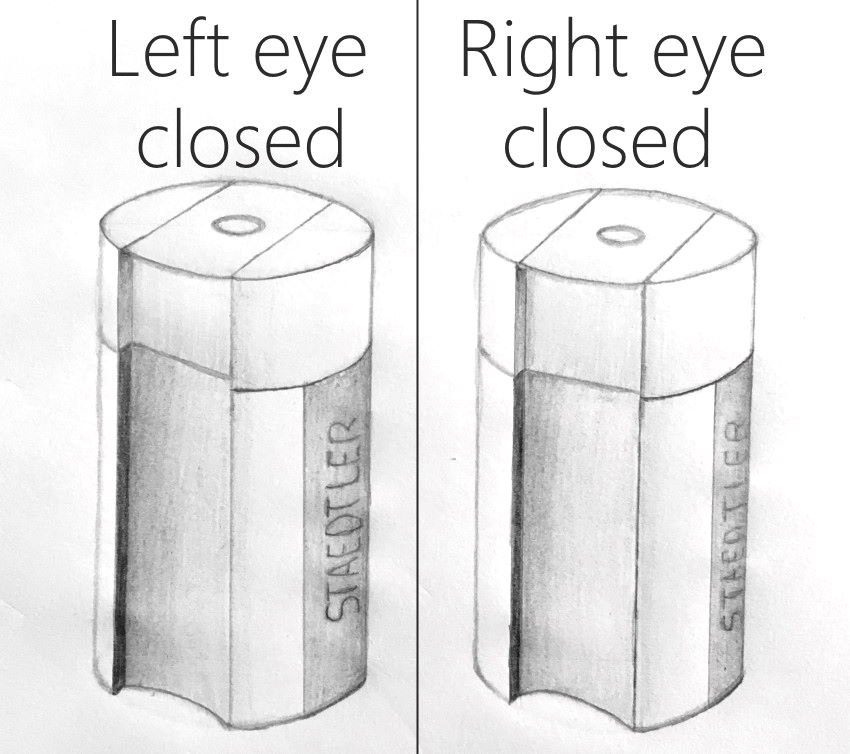
Look at some coloring pages on your screen, and effort to reproduce them.
Drawing the form (structure) accurately is the most important part of realistic drawing.
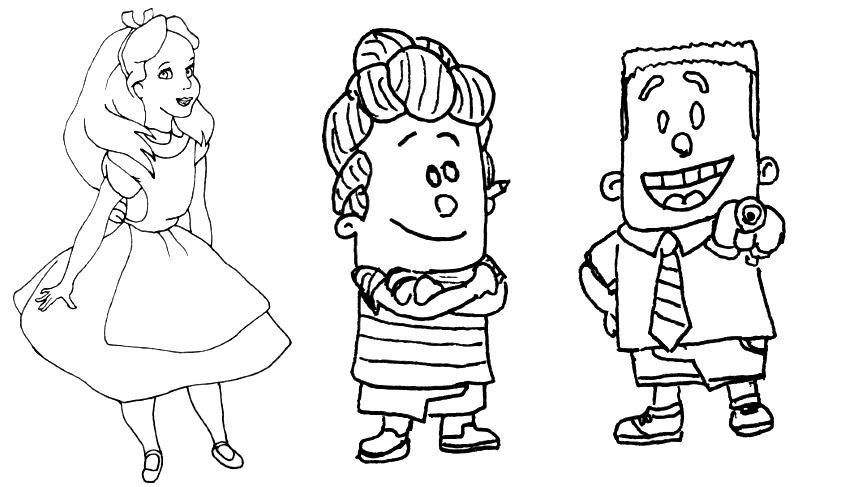
Remember:
Learning to draw accurately from ascertainment is crucial for drawing realism.
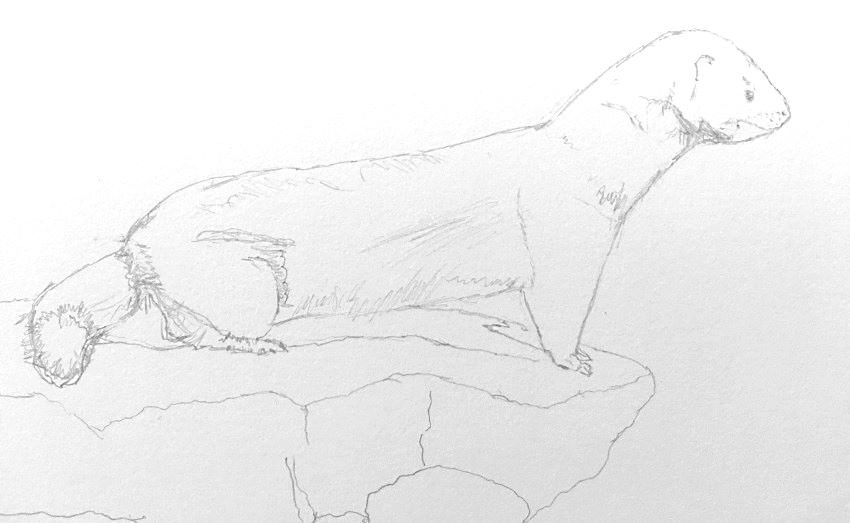
After yous master drawing anything in proportion, y'all can deal with the other factors of drawing realism.
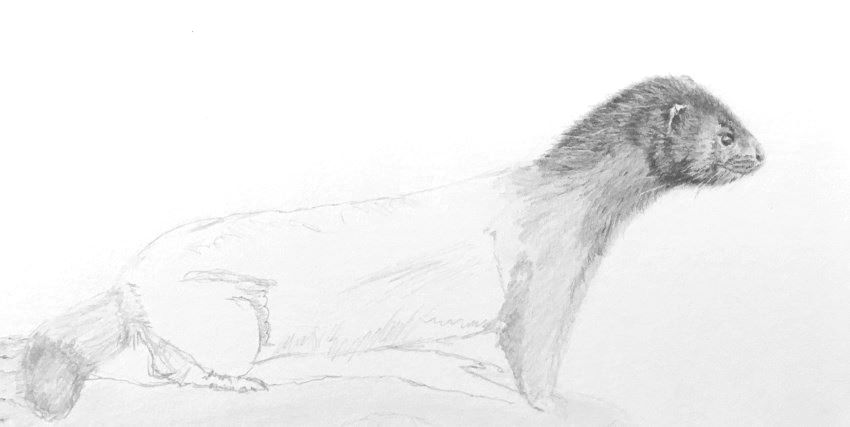
Understanding brightness values is essential, and I volition cover it next.
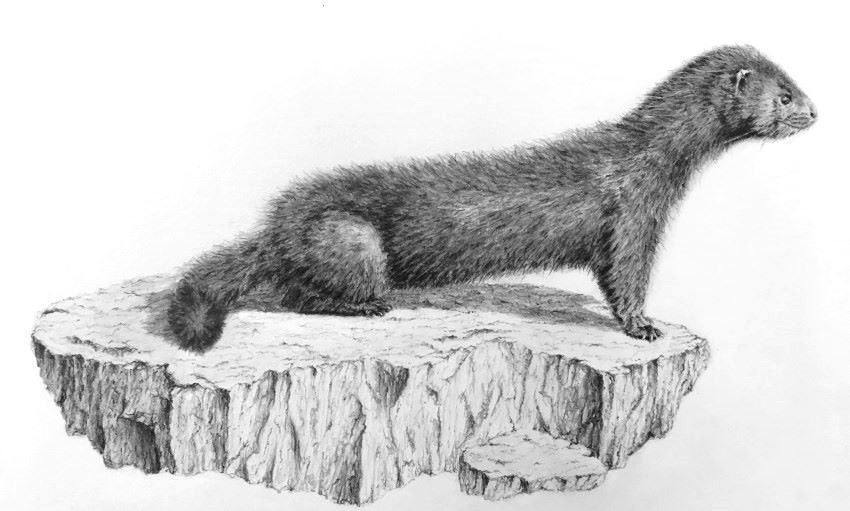 Realistic pencil drawing of a mink
Realistic pencil drawing of a mink
Brightness Values
What are brightness values?
Brightness values or values are how low-cal or dark whatsoever area of the drawing is.
Brightness values play a crucial role in creating the illusion of depth and three-dimensional forms on a two-dimensional surface.
What is pencil cartoon?
Pencil drawing, at its about basic class, is putting graphite particles on paper.
To do that, we use pencils.
Pencils come in dissimilar hardness levels. Hard pencils only put a niggling corporeality of graphite particles on a newspaper, resulting in a lighter/brighter value (H levels for hardness).

On the other paw, soft pencils put a big amount of graphite on a paper, which results in a darker value (B levels for blackness).

How to apply a pencil?
For any type of pencil, the corporeality of pressure applied while drawing determines the brightness value. More pressure creates a darker value, and less pressure creates a lighter value.
I recommend using a number of cartoon pencils with different darkness levels for dissimilar brightness values.
Sharp pencils are suitable for small details. For shine transitions, sometimes it is useful to employ not-abrupt pencils.
For a listing of materials that I use for cartoon, visit my essential pencil-cartoon supply review.
How to exercise?
Know your tools! Practice on creating gradual transitions in brightness values for each pencil grade y'all use.
That will assist you determine how much pressure to use for each different brightness value, and how night or light you tin go with each pencil grade:
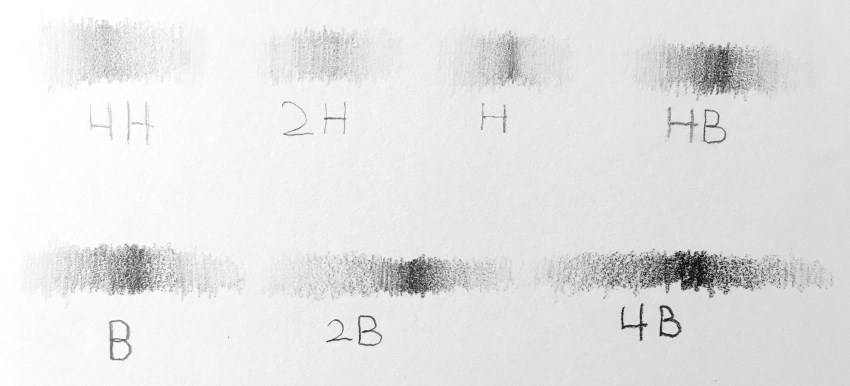
You tin can modify effulgence values by using a kneaded eraser.
By gently tapping on a drawing surface, the kneaded eraser will collect graphite particles, and therefore result in a lighter value.

How to determine effulgence values?
Ascertainment is the fundamental to identifying the brightness values of whatsoever object or image.
Examine each role of the drawing, to see if it is darker or lighter than the object you are trying to describe, and so correct it accordingly.
In addition, it is important to pay attention to the range and multifariousness between the darkest areas and the brightest:
- If the range or difference between night and light areas is pocket-size, the drawing may appear apartment.
- When the range between dark and bright areas is big, the cartoon is noticeable, and has book and depth.
In other words, there should be enough dissimilarity betwixt nighttime and bright parts of the cartoon in order for it to look rich and intense.
Tip:
Sometimes when looking at a complex object, specially with colors (or texture), it is hard to see how nighttime or light each expanse is.
To solve this problem, squint while observing, in gild to lose focus.
When both eyes are partly closed, you lot can focus on effulgence values, and condone other distractions.
Exercise:
Attempt drawing your mitt. Start by marking the cartoon paper, so you lot can e'er put your hand dorsum at the aforementioned identify.
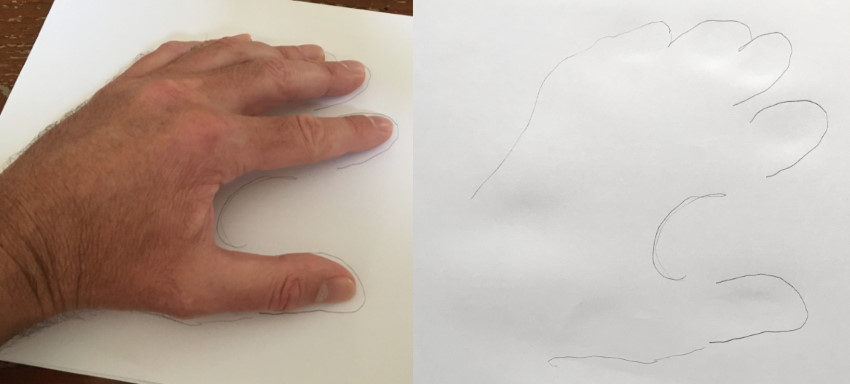
Unless yous are using a tabular array lamp, divergence in brightness values are subtle, and therefore it is a cracking practise to master values.
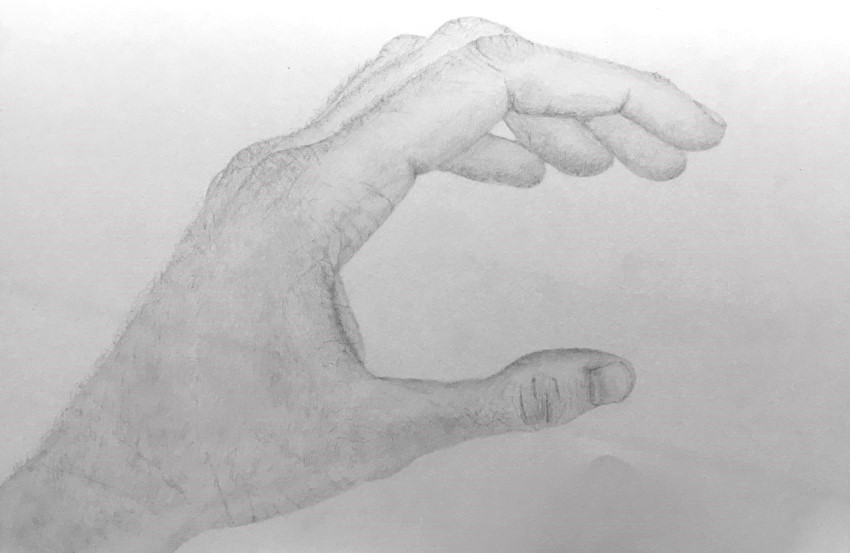
Arguably, the hardest form of drawing is portraiture.
Information technology is critical to exist accurate both in drawing the course AND in brightness values.
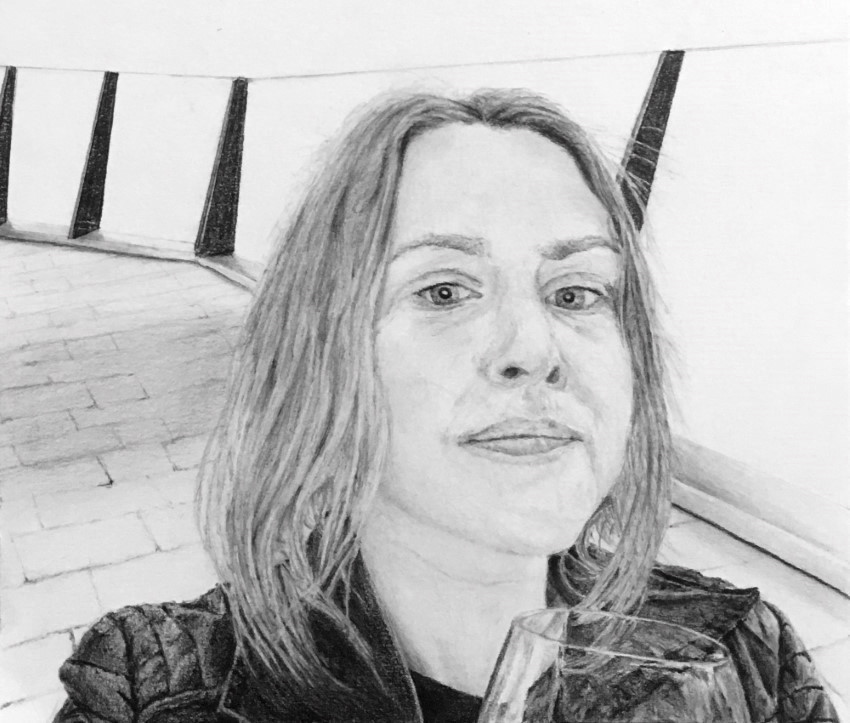 Portrait pencil cartoon, Alin
Portrait pencil cartoon, Alin
Edges
As opposed to comics drawing that is characterized by contour lines, which surroundings the effigy, in realistic drawing with a pencil (or in whatsoever other way), there are no lines at all.
The edge of an object is where its shape or surface ends. Information technology can end in a sharp manner, or in a soft way, only it is not a line!
Some objects (similar fur, pilus, or cloth) accept soft edges, while other objects (similar rocks, cars, or piece of furniture) have difficult edges.
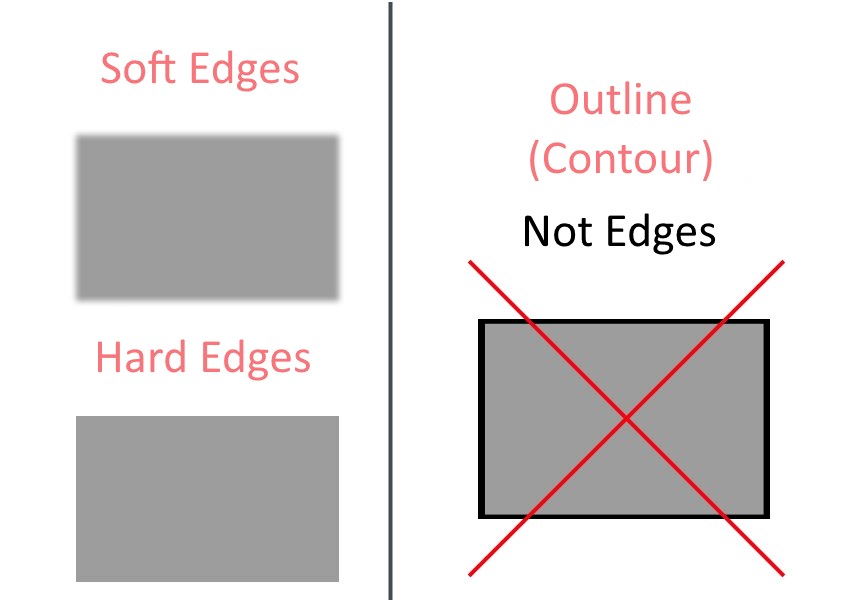 Edges vs outlines
Edges vs outlines
To draw a soft border is to create a gradual transition (gradient) in brightness values, from dark to light.
Depending on climate conditions and distance, far away objects might have soft edges.
Think:
Use lines only as guidelines to draw an authentic class. Draw them lightly, so they are easy to erase if needed.
How to draw soft edges:
There are many ways to draw soft edges (gradient from nighttime to light), depending on the effect you would like to reach.
Hereby, iii recommended ways:
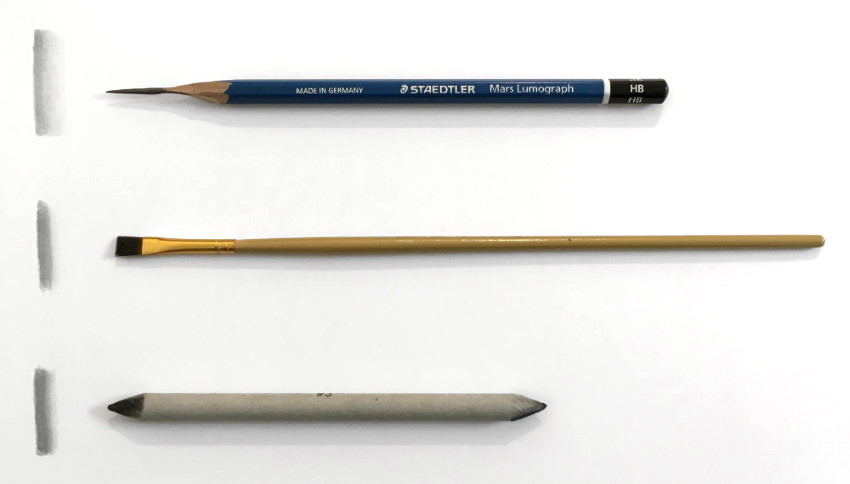 Methods to describe soft edges
Methods to describe soft edges
If you are non around your drawing equipment, you can e'er use a dry paper (like paper towel) or cloth to smooth edges.
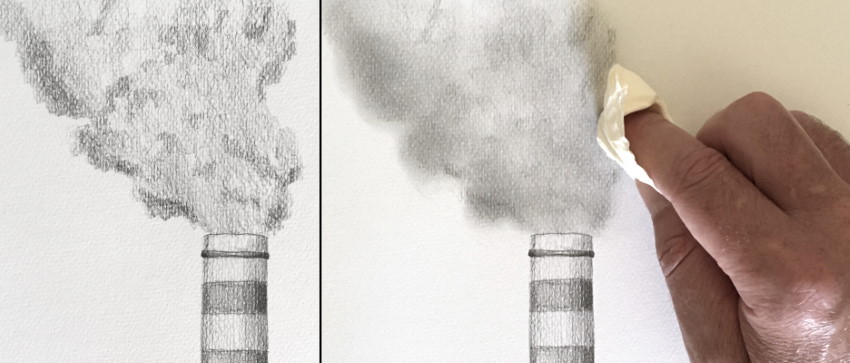 Soft edges with toilet paper
Soft edges with toilet paper
Annotation:
Endeavour to avoid smudging a pencil cartoon using your finger. Information technology can transfer body oils or sweat to the paper sheet.
Using soft edges for far abroad objects creates a sense of depth.
Pencil drawing example:
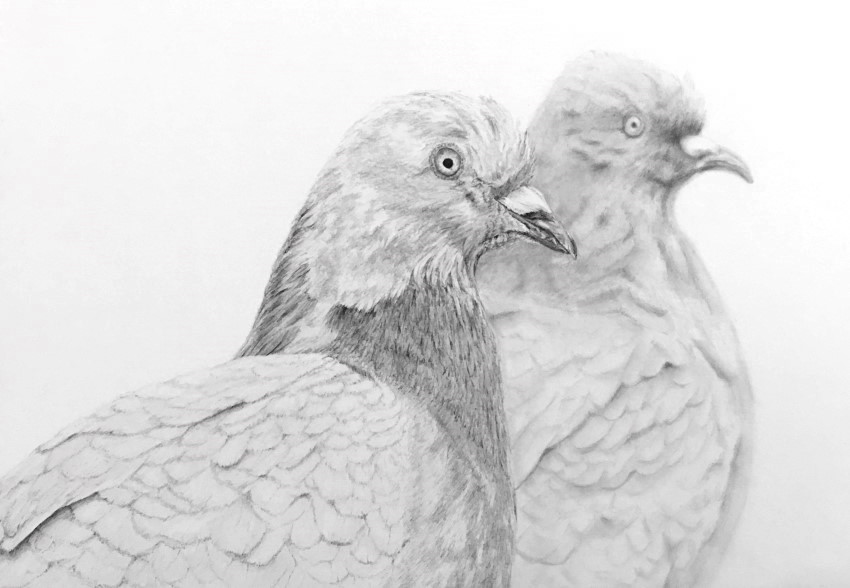 Soft edges for far object to add depth
Soft edges for far object to add depth
Shadows and reflections:
In many cases, shadows and reflections have soft (or less defined) edges.
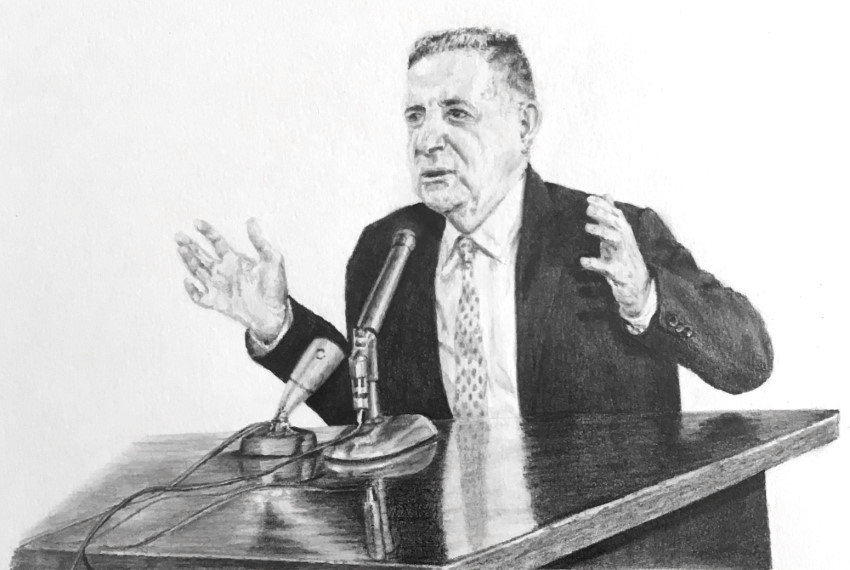 Less divers edges for reflections
Less divers edges for reflections
Transitions
When cartoon with a pencil, it is important to pay attention to brightness values (how night or calorie-free each area is) and edges (how each expanse or surface ends, either with a soft edge or a hard edge).
In addition, pay attention to transitions.
On a certain surface, areas that are closer to a light source are lighter, and areas farther away from the light source are darker, meaning the surface has a gradual transition in values.
Therefore, look for the brightness values of a particular surface compared to other surfaces, but also the transitions of values inside the surface itself.
Pencil cartoon instance:
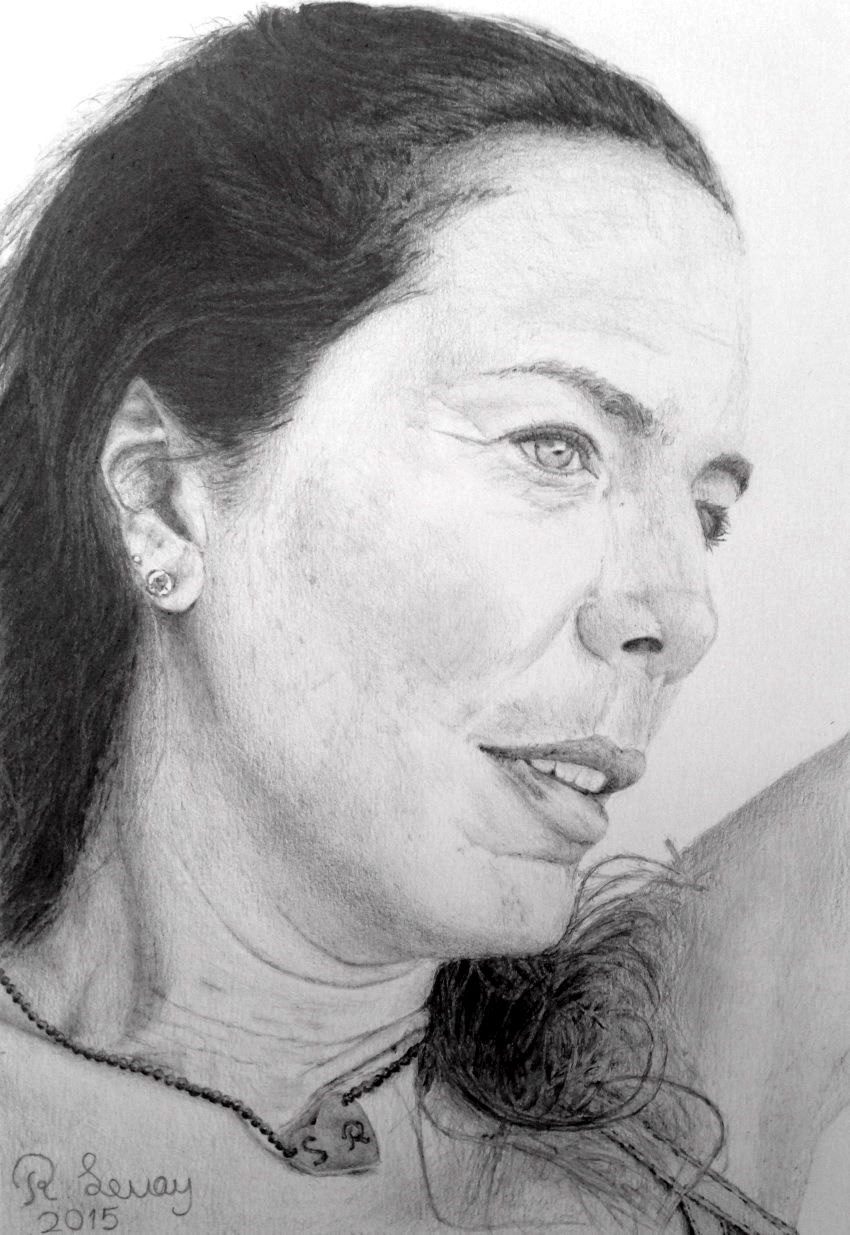 Portrait pencil cartoon, Sharon
Portrait pencil cartoon, Sharon
In the next example, I used transitions in brightness values to draw the folds in the cervix area.
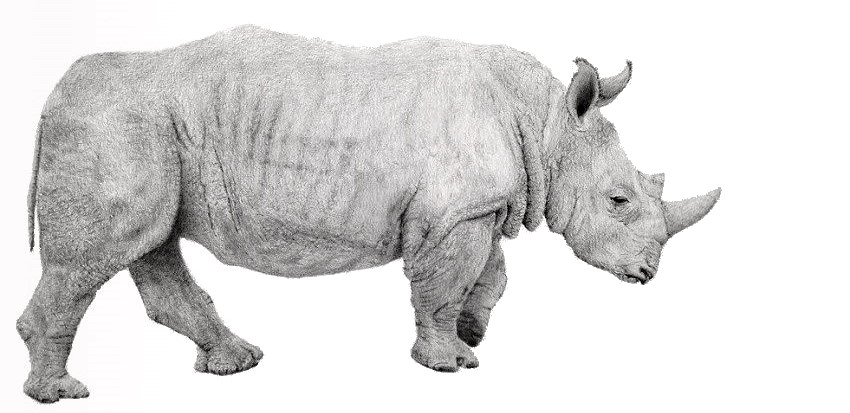 Rhinoceros pencil cartoon
Rhinoceros pencil cartoon
Remember:
Every role of each drawing has transitions. An area with no transitions looks flat and unnatural.
Drawing Tips
Where to start cartoon?
If you are right-handed, get-go drawing from the upper left role of a newspaper sheet, and gradually motility to the lower right.
For left-handed artists, start at the upper right office of the paper.
In this way, the palm can rest on the blank surface of the drawing-paper, and not smear what has already been drawn.
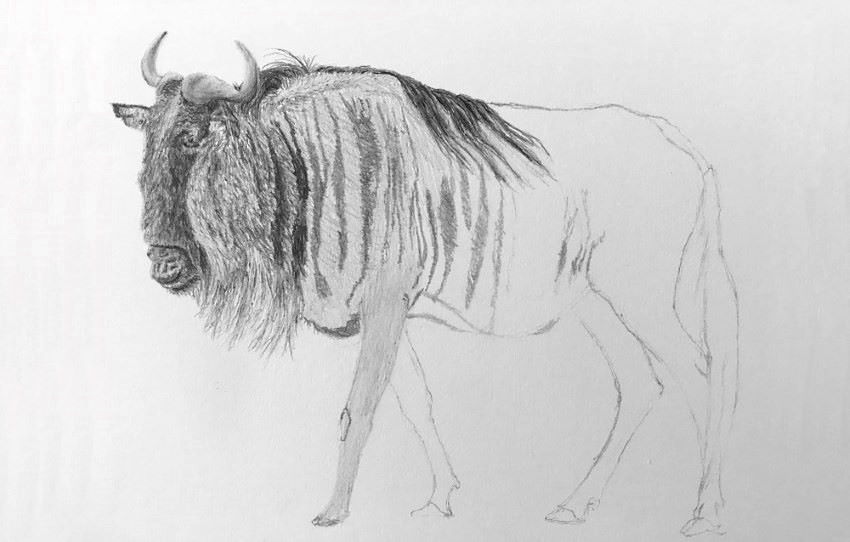 Drawing from left to right
Drawing from left to right
Where to put the lite source?
If you are right-handed, identify the lighting (table lamp) on the left side, so that the palm will non block the source of low-cal, and you can see trivial details while drawing.
If yous are left-handed, identify the lighting on the right side.
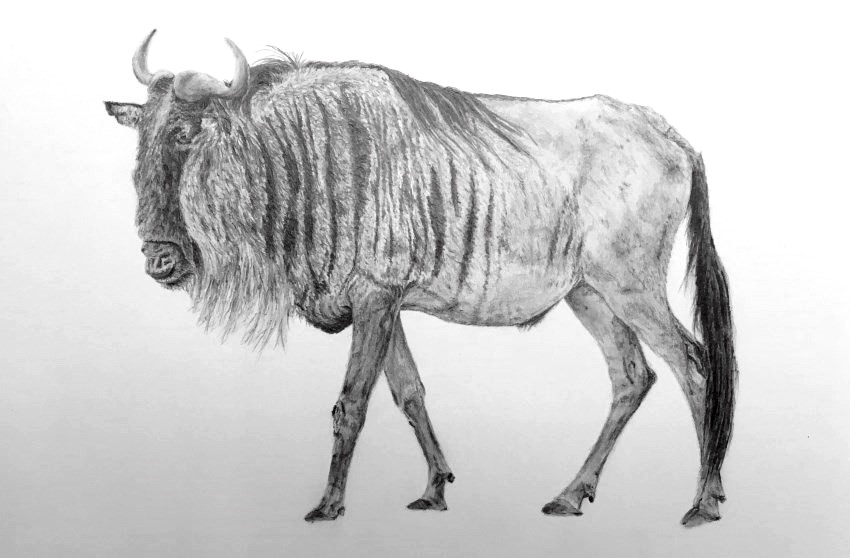 Wildebeest pencil drawing
Wildebeest pencil drawing
How to hold a pencil?
By using the pollex, you tin motility the pencil trunk upwardly, and use it as a measuring device (to see angles).
When releasing the thumb, the pencil is dorsum in place for drawing:
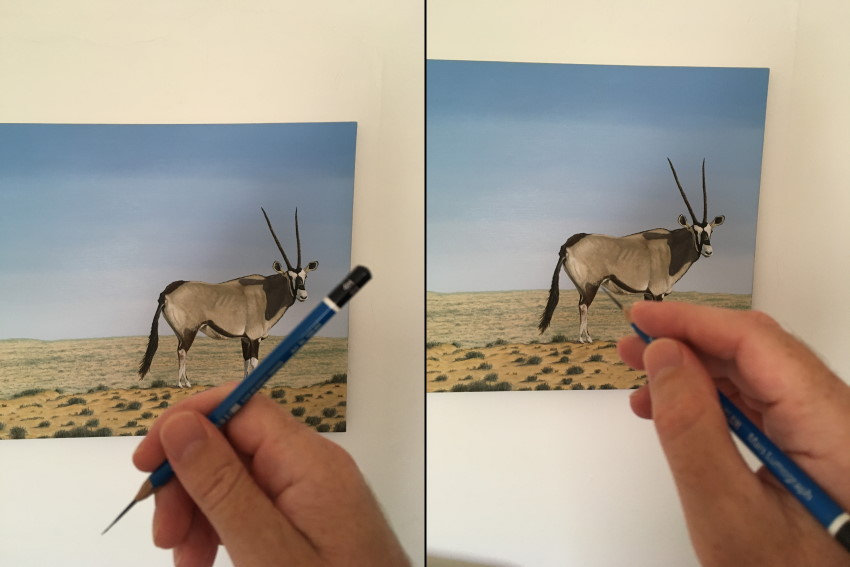
How to avoid smearing?
In order to avert smearing the drawing or transfer body oils or sweat to a cartoon paper, yous tin can identify a blank sheet of newspaper under the drawing manus, then that the palm is not placed on the drawing-paper.
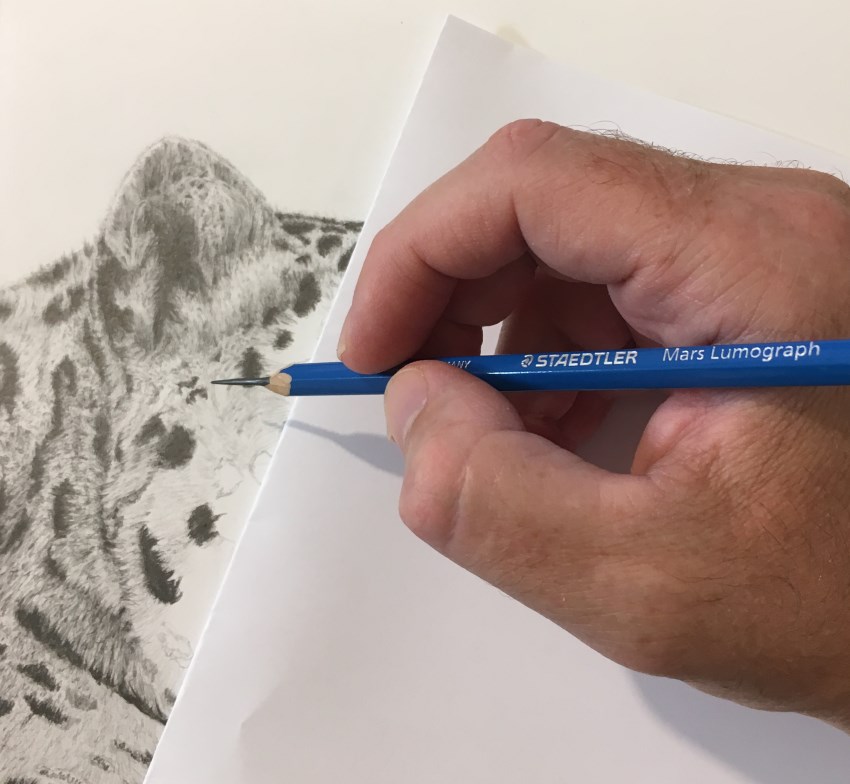
Some other selection is to use a transparent newspaper sail under the drawing paw, that manner you lot can avoid smearing, and still meet your drawing.
How to utilize your drawing equipment?
Attempt not to printing hard when cartoon, so you do non damage the newspaper canvass you are cartoon on.
Depict as if you are using a paintbrush, softly and gently. You will get smooth results, and you do not need to use smoothing tools.
Employ thick newspaper for your artworks, it is more durable. Sparse paper sheets are great for practise.
I prefer paper with at least 150 g/m thickness, ideally 180 g/m or more:

Practice not lean hard on paper (with any manus) when cartoon, to avert dents.
How to apply a grid?
The center of a reference paradigm is the betoken where the two diagonals meet.
Later finding the midpoint, draw a horizontal line and a vertical line in club to divide the prototype into 4 rectangles.
If an epitome is large and circuitous, yous tin divide each rectangle repeatedly to have more grid lines.
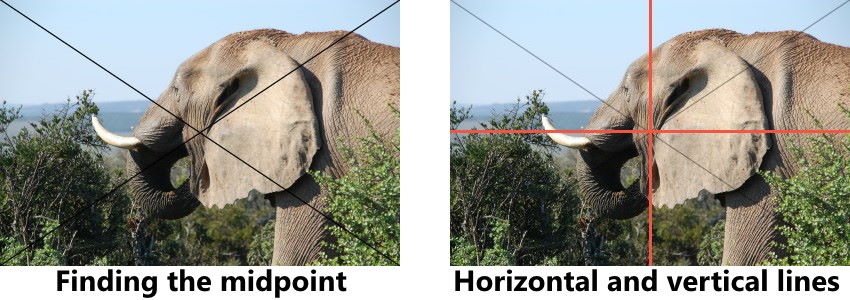
The next step is creating a filigree on your drawing paper, which is the same procedure of finding the midpoint and creating vertical and horizontal lines.
Recollect that the ratio between the width and tiptop of your drawing paper should be exactly like the reference image. Y'all tin can always crop the reference image to fit the ratio of the drawing paper.
Now it is possible to draw within each rectangle separately. Consequently, the drawing process becomes easier and more than precise.
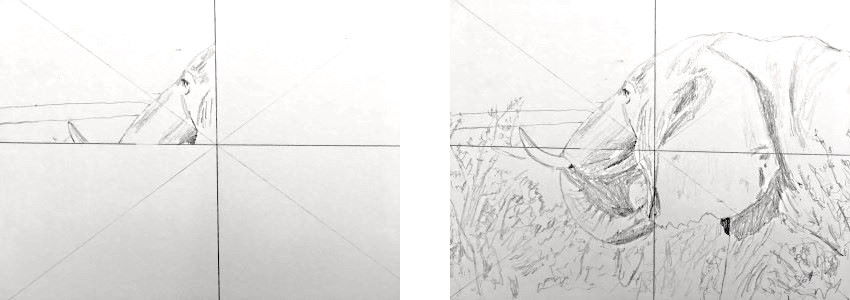
When drawing grid lines, practise it gently, so you can erase them later on!
While I rarely utilize filigree lines when cartoon, for commission drawings, particularly with limited time, I use grid lines for efficiency and speed.
Committee drawing process:
I start by drawing the form accurately.
Then I pay attention to the other iii factors (effulgence values, edges & transitions).
I am right-handed, and then I draw from left to correct and from pinnacle to bottom:
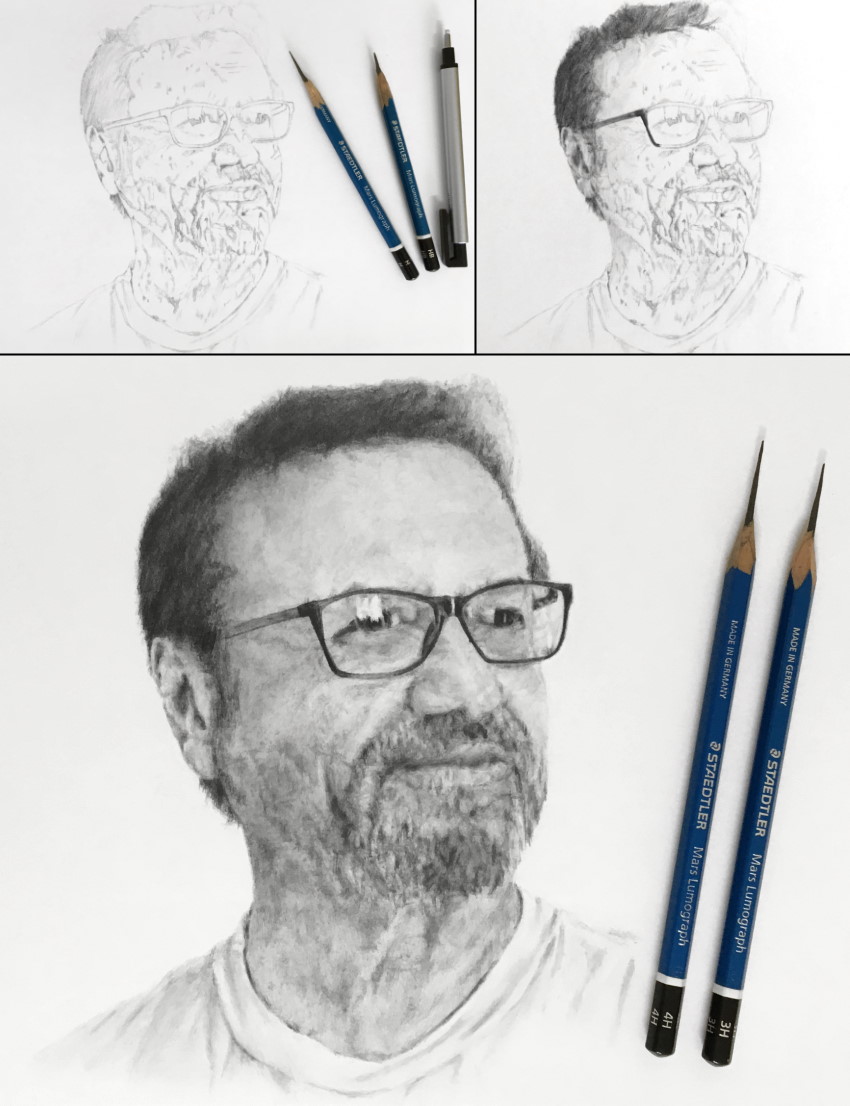
For more than tips, check out my fine art painters gallery for exclusive painting tips past professional painters.
Which newspaper size to use?
Realistic drawing is time-consuming.
A drawing of an animal or a portrait, on an A4 paper sheet, can concluding 15-40 hours.
Therefore, I exercise not recommend cartoon on a large newspaper sheet.
Depending on the project, I utilize these paper sizes: A5 (pocket-sized), A4 (medium) and A3 (large).
How to depict straight borders?
When using just part of a paper for cartoon, information technology is useful to edge it with masking tape.
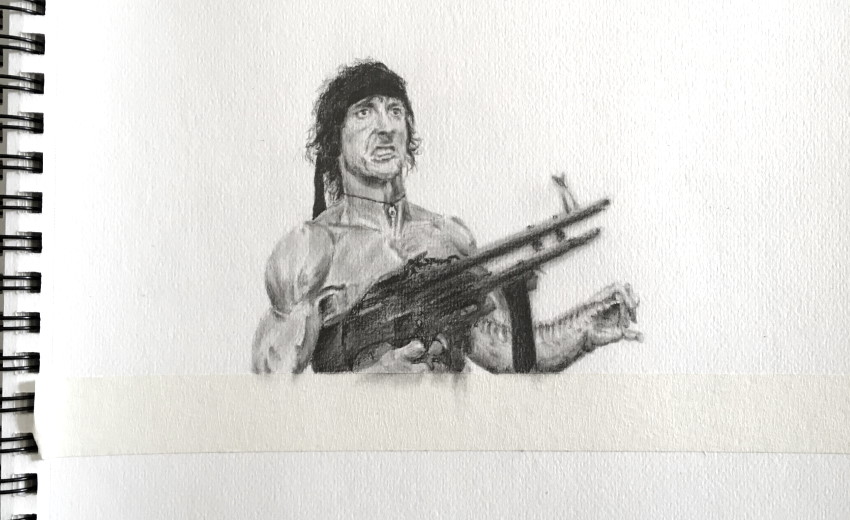
When the drawing is ready, remove the masking record, and you will have a direct edge.
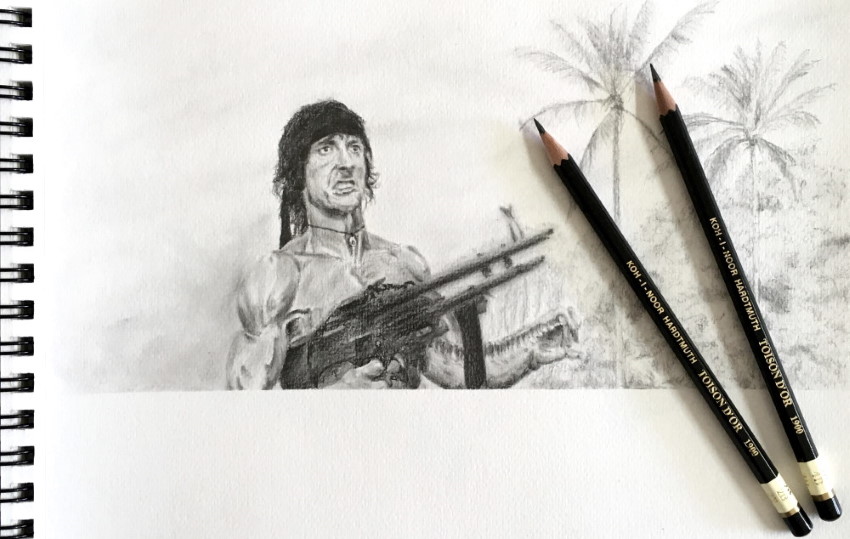
Pen Drawing
While there are no lines in nature or in realistic pencil cartoon, pen drawing is characterized past drawing lines.
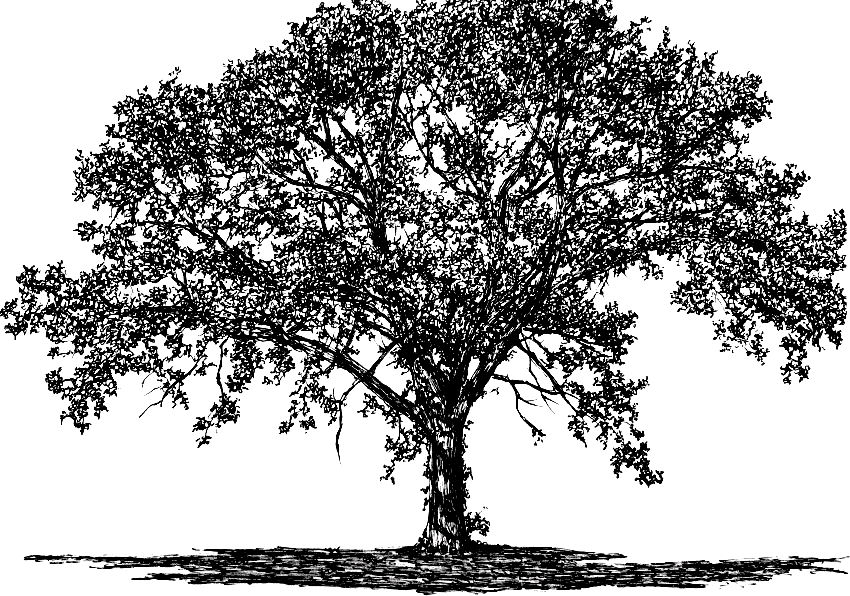 Cartoon using lines
Cartoon using lines
I use a technical pen (fineliner) for drawing.
For recommended pen brands to use, visit my review on cartoon pens for artists.
A pen has a fixed brightness value!
The way to create the illusion of different brightness values when cartoon with a pen, is to create more lines in the same expanse for a darker value, and fewer lines for a lighter value.
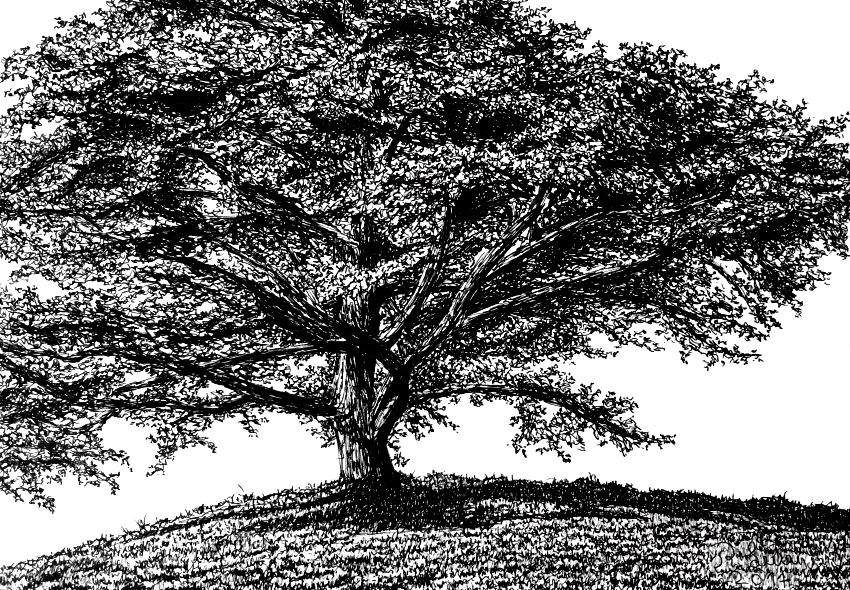 Brightness values using lines
Brightness values using lines
If y'all similar cartoon with pens, yous might similar my guide for flower drawing.

And, my guide for drawing trees.
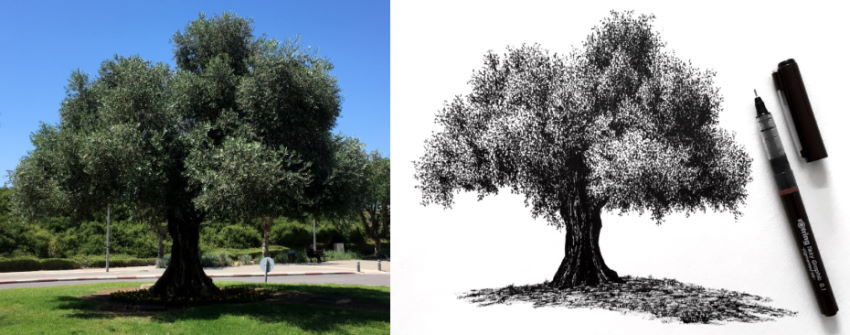
Summary
Since all materials are made of molecules, they can never be one hundred percent shine.
Low-cal travels equally a wave; therefore, shadows are non completely precipitous.
For these reasons, at that place are no lines in nature!
When drawing with pencils, it is all about transitions in brightness values and different types of edges.
That said, in art, information technology is possible to create realistic looking drawings, using only lines, by creating the illusion of transitions, effulgence values and edges.
For an in-depth commodity about cartoon and painting realism, visit The 8 Key Factors for Painting Realism.
To sympathize and add depth when cartoon, visit my guide for creating the illusion of depth in art, it includes xv ways to draw depth, with many examples!
While it is user-friendly to draw from images, I recommend practicing cartoon from straight observation. Read my still life composition-cartoon tutorial to see how to plan your composition.
![]()
![]()
Copyright © RanArtBlog.com. All Rights Reserved. | Sitemap
Source: https://ranartblog.com/blogarticle03.html
Posted by: batesountracentle.blogspot.com


0 Response to "How To Draw Realistic Digital Art"
Post a Comment